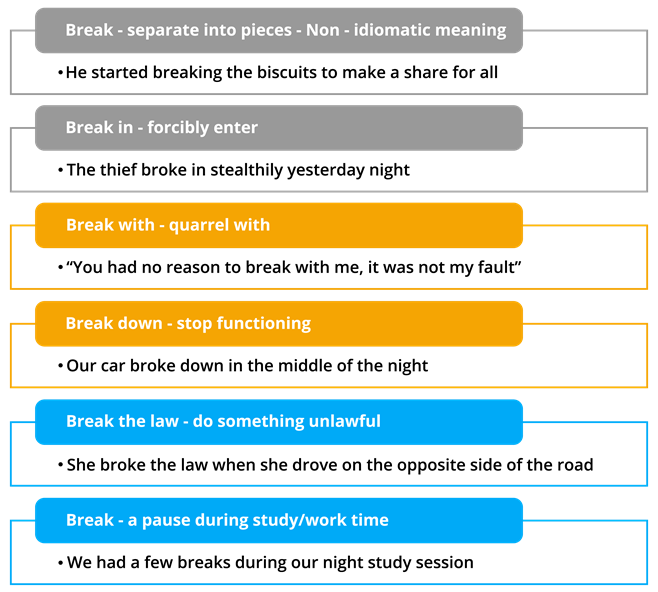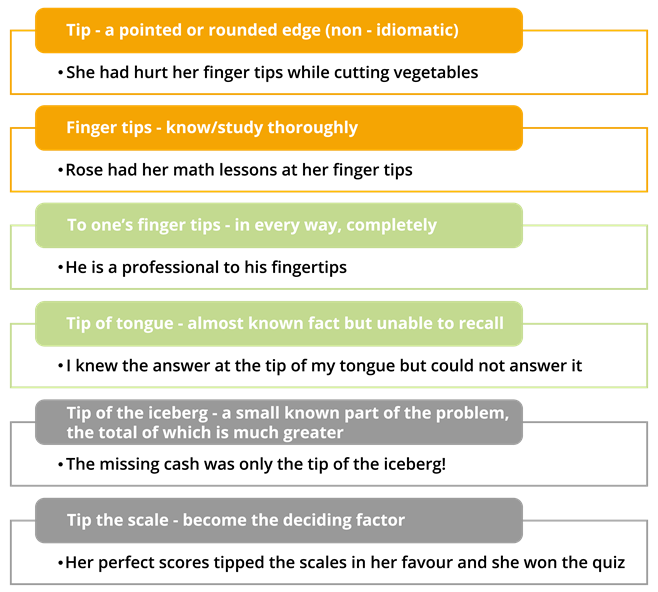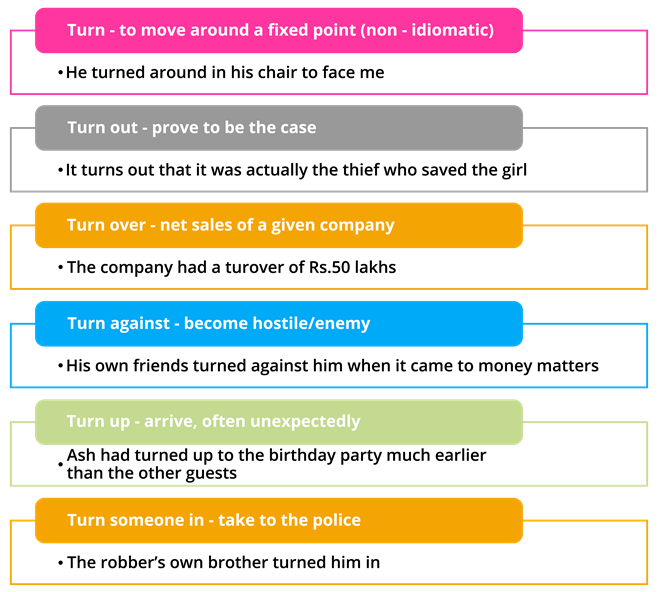PDF chapter test TRY NOW
We have already seen that idioms have both literal and subtle meanings. It is important to understand the idiomatic and the non-idiomatic meanings of the expressions. The same expression or phrase can be used in more than two contexts.
The word "break" has many meanings. The literal meaning is called non-idiomatic meaning and the other formed phrases (noun + preposition / verb + preposition) have idiomatic meanings. Let us look into the picture for a clear understanding.

Similarly, we can try for different words:
Tip: The literal meaning or the non-idiomatic meaning - the pointed or rounded edge. Let us look into the picture for a clear understanding.

Similarly, many of our everyday words have both idiomatic and non-idiomatic meanings. It is a good exercise to try and list down all possible combinations that can be formed from a single noun/verb to form different meanings. Let us take another example:
Turn: The literal meaning or the non-idiomatic meaning - to move in a circle along with a fixed point

